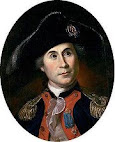I am posting two articles from the Examiner which I find distrubing and very relevant to what is going on today in the States. One has to do with our borders and how unsecured they are. The other has to do with how the federal government is assisting illegals move their money back to Mexico. Both of these articles are exposing areas of grave concern and are weaknesses that need fixing. We probably will not see either from our current administration.
________________________________________________________________________________________________________________________________________________________
Border shocker: Radioactive material brought into U.S. by covert agents
Jim Kouri
Examiner.com
"In three states, the proximity of the road to the border allowed investigators to cross undetected, successfully simulating the cross-border movement of radioactive materials or other contraband into the United States from Canada." - Covert Operations Report
In the past, officials from the Government Accountability Office testified before members of the U,S. Congress on three separate occasions in order to describe security vulnerabilities that terrorists could exploit to enter the country. Yet, even with reports of border security deficiencies, President Barack Obama cut the number of Border Patrol agents.
According to a report obtained by the Terrorism Committee of the National Association of Chiefs of Police, the GAO's first two testimonies focused on covert testing at ports of entry -- the air, sea, and land locations where international travelers can legally enter the United States.
In its third testimony, the GAO focused on limited security assessments of unmanned and unmonitored border areas between land ports of entry.
GAO officials were asked to summarize the results of covert testing and assessment work for these three testimonies. This report discusses the results of testing at land, sea, and air ports of entry; however, the majority of GAO's work was focused on land ports of entry. The unmanned and unmonitored border areas GAO assessed were defined as locations where the government does not maintain a manned presence 24 hours per day or where there was no apparent monitoring equipment in place.
GAO investigators identified numerous border security vulnerabilities, both at ports of entry and at unmanned and unmonitored land border locations between the ports of entry. In testing ports of entry, undercover investigators carried counterfeit drivers' licenses, birth certificates, employee identification cards, and other documents, presented themselves at ports of entry and sought admittance to the United States dozens of times.
They arrived in rental cars, on foot, by boat, and by airplane. They attempted to enter in four states on the northern border (Washington, New York, Michigan, and Idaho), three states on the southern border (California, Arizona, and Texas), and two other states requiring international air travel (Florida and Virginia).
In nearly every case, government inspectors accepted oral assertions and counterfeit identification provided by GAO undercover investigators as proof of U.S. citizenship and allowed them to enter the country. In total, undercover investigators made 42 crossings with a 93 percent success rate. On several occasions, while entering by foot from Mexico and by boat from Canada, covert investigators were not even asked to show identification.
For example, at one border crossing in Texas, an undercover investigator attempted to show a Customs and Border Protection (CBP) officer his counterfeit driver's license, but the officer said, "That's fine, you can go" without looking at it.
As a result of these tests, GAO concluded that terrorists could use counterfeit identification to pass through most of the tested ports of entry with little chance of being detected.
In its most recent work, GAO shifted its focus from ports of entry and primarily performed limited security assessments of unmanned and unmonitored areas between ports of entry. The names of the states GAO visited for this limited security assessment have been withheld at the request of Customs and Border Protection officials.
In four states along the U.S.-Canada border, GAO covert investigators found state roads that were very close to the border that CBP did not appear to monitor. In three states, the proximity of the road to the border allowed investigators to cross undetected, successfully simulating the cross-border movement of radioactive materials or other contraband into the United States from Canada.
For example, in one apparently unmanned, unmonitored area on the northern border, the U.S. Border Patrol was alerted to GAO's activities through the tip of an alert citizen. However, the responding U.S. Border Patrol agents were not able to locate the investigators and their simulated contraband.
Also on the northern border, GAO investigators located several ports of entry in one state on the northern border that had posted daytime hours and were unmanned overnight. Investigators observed that surveillance equipment was in operation, but that the only preventive measure to stop an individual from crossing the border into the United States was a barrier across the road that could be driven around.
GAO officials also identified potential security vulnerabilities on federally managed lands adjacent to the U.S.-Mexico border. GAO concluded that CBP faces significant challenges on the northern border, and that a determined cross-border violator would likely be able to bring radioactive materials or other contraband undetected into the United States by crossing the U.S.-Canada border at any of the assessed locations.
Examiner.com
Hat tip: Act for America
----------------------------------------------------------------------------------------
Corruption at Federal Reserve Bank goes unnoticed
Jim Kouri
Examiner.com
America's banking industry is aiding and abetting lawbreakers and there appears to be no one in Washington, D.C. interested in conducting an investigation into this corruption.
While the mainstream news media are hard at work covering the Democrats striving to achieve their dream of taking control of Americans' health care, the Federal Reserve Bank continues working with the Mexican government to make it easier for illegal aliens to export US money to their homeland.
The Fed is currently devising several programs that will extend banking services to illegal aliens, and most of this money transfer scheme was created under the radar with few -- if any -- political figures discussing the subject.
One such program being utilized by illegal aliens from Mexico is a remittance program with the ultimate goal of bringing illegal Mexican aliens -- who send money home -- into the mainstream of the US financial system, regardless of immigration status. In other words, The Federal Reserve Bank is aiding lawbreakers in moving their cash around in the US and Mexico. This obviously includes the myriad alien gangs and more than 50,000 gang members who are involved in narcotics trafficking, identity theft, homicides, and other criminal activity.
"Directo a Mexico," the name of the program, enables US commercial banks to make money transfers for Mexican workers through the Federal Reserve's own automated clearinghouse, which is linked to Banco de Mexico, the Mexican central bank. Few Americans are aware of the connection between the Fed and foreign banks and this program would be just another that exists in the shadow world of international banking.
To use the service, a Mexican need only possess a matricula consular, an ID issued by the Mexican consulate in most major US cities to those with proof of Mexican birth or citizenship, or a picture ID card issued by the US or another foreign government. The idea is to make it "cheaper and safer" for illegal workers to send funds to their relatives in Mexico.
While on the surface this may appear to be a good idea for banks, it's an idea based on lawbreakers being given assistance in moving their money around. The Mexican drug trafficker will be able to take advantage of this new banking system as much as the illegal worker cleaning toilets.
Most law enforcement commanders recognize the Matricula Consular card as a useless identification document. In fact, some US government agencies still refuse to accept them as identification documents.
Most illegal aliens make cash transfers, which average $350 each, through companies like Western Union or a hodgepodge of wire-transfer firms, couriers and others that operate out of storefronts in Hispanic enclaves. Family members then collect the wired cash at a shop in their town or village.
The Federal Reserve Bank's primary goal is to use the program to draw hundreds of thousands of illegal aliens into our banking system because commercial banks require that those wanting the service first open a savings account. While American citizens will continue to be required to show extensive identification and proof of residence, illegal aliens will only be required to show a Matricula Consular card, which are known to be counterfeited and sold by human smugglers.
"People who didn't have bank accounts establish a relationship with us," said James Maloney, chairman of Mitchell Bank in Milwaukee, one of the first banks to offer the Federal Reserve Bank's remittance scheme, according to the Wall Street Journal, a newspaper that favors using illegal alien workers.
"It's great for our business," said Maloney.
Remittances sent by Mexicans topped $15.5 billion in the first few months of this year, 20 percent higher than the amount sent during the same period the previous year, according to Mexico's central bank, and this year's annual figure is expected to hit a new record. Savings scraped together by nannies, painters and others working abroad are now Mexico's second-largest source of foreign revenue, after oil exports and ahead of tourism, according to analysts interviewed by the WSJ.
The Federal Reserve Bank, always a friend to foreign interests, is instructing illegal aliens that should they return home on their own or should they be deported, their money is safe whether it was obtained working as a busboy in a restaurant or working as an enforcer in a sex-slave house.
The Fed has already set up a system by which illegals can retrieve their money through easy access at an ATM in Mexico using their debit cards.
And whom do we have to thank for this financial windfall for illegal aliens? The US federal government.
One of the stated objectives is to continue to help lower the fees paid by Mexican workers to send money to their native country. It's bargain time for illegal aliens.
"Now, if only Obama and the rest of our elected officials would look out for the interests of US citizens during these tough economic times," quipped political strategist Mike Baker.
"As for mobsters, they will have an even easier time laundering the ill-gotten gains," he added.
Examiner.com
Hat tip: Blogs for Borders
Tags: illegal immigration, National Security, Amnesty bill, Obama, To share or post to your site, click on "Post Link". Please mention / link to the Patriot's Corner. Thanks!
ir a principal |
Ir a lateral


Contributors: Editor: AJ
Will work for cookies!
Staff: ambisinistral - Ozark Guru - PatriotUSA - Gary Fouse - HermitLion - Nick McAvelly
Twitter

Robert E. Lee at Chancellorsville


Nathan Bedford Forrest

The Cartoon that
started it all

This site is dedicated to threats faced by America and the free world. Freedom and liberty are being attacked from all sides. and, a battle has once again surfaced against a very old enemy, Islam, Islamofascism, tyranny, and the regressive progressive statist. Our work is dedicated to patriots who will stand up for freedom and liberty based on the Constitution of the United States. We will defend to the death, your right to your opinion. The Founding Fathers had it mostly right!

Eternal flame 9-11-2001




Comments by contributors or sources do not necessarily reflect the position of Patriot's Corner, other Contributors or the Editors. Fair Use: This site/blog may contain copyrighted material the use of which has not been specifically authorized by the copyright owner. Such material is made available to advance understanding of political, human rights, economic, democracy, and social justice issues, etc. This constitutes a 'fair use' of such copyrighted material as provided for in section Title 17 U.S.C. Section 107 of the US Copyright Law. Per said section, the material on this site/blog is distributed without profit to readers to view for the expressed purpose of viewing the included information for research, educational, or satirical purposes. Any person/entity seeking to use copyrighted material on this site/blog for purposes that go beyond "fair use," must obtain permission from the copyright owner.


Contributors: Editor: AJ

Will work for cookies!
Staff: ambisinistral - Ozark Guru - PatriotUSA - Gary Fouse - HermitLion - Nick McAvelly
Follow These Twitters
Subscribe Free & Feeds:
Robert E.Lee

Robert E. Lee at Chancellorsville
Stonewall Jackson

Charge both ways

Nathan Bedford Forrest
Archive
-
►
2022
(14)
- October (2)
- August (1)
- July (2)
- June (2)
- May (2)
- April (1)
- March (1)
- February (2)
- January (1)
-
►
2021
(24)
- December (1)
- November (1)
- October (1)
- September (2)
- August (2)
- July (1)
- June (1)
- May (2)
- April (1)
- March (3)
- February (3)
- January (6)
-
►
2020
(32)
- December (3)
- November (2)
- October (4)
- September (2)
- August (2)
- July (4)
- June (1)
- May (4)
- April (3)
- March (3)
- February (1)
- January (3)
-
►
2019
(31)
- December (4)
- November (1)
- October (2)
- September (3)
- August (3)
- July (3)
- June (2)
- May (2)
- April (4)
- March (2)
- February (2)
- January (3)
-
►
2018
(23)
- December (3)
- November (1)
- October (2)
- September (1)
- August (2)
- July (2)
- June (1)
- May (2)
- April (2)
- March (3)
- February (1)
- January (3)
-
►
2017
(47)
- December (2)
- November (3)
- October (4)
- September (4)
- August (3)
- July (4)
- June (5)
- May (4)
- April (6)
- March (5)
- February (4)
- January (3)
-
►
2016
(58)
- December (4)
- November (6)
- October (3)
- September (4)
- August (3)
- July (4)
- June (4)
- May (3)
- April (4)
- March (8)
- February (8)
- January (7)
-
►
2015
(86)
- December (5)
- November (5)
- October (5)
- September (6)
- August (9)
- July (8)
- June (2)
- May (5)
- April (4)
- March (6)
- February (14)
- January (17)
-
►
2014
(244)
- December (10)
- November (15)
- October (15)
- September (8)
- August (22)
- July (9)
- June (8)
- May (22)
- April (20)
- March (28)
- February (40)
- January (47)
-
►
2013
(604)
- December (39)
- November (56)
- October (44)
- September (36)
- August (42)
- July (38)
- June (46)
- May (70)
- April (78)
- March (42)
- February (50)
- January (63)
-
►
2012
(954)
- December (77)
- November (76)
- October (113)
- September (94)
- August (97)
- July (77)
- June (73)
- May (58)
- April (51)
- March (66)
- February (78)
- January (94)
-
►
2011
(911)
- December (87)
- November (101)
- October (67)
- September (62)
- August (69)
- July (52)
- June (71)
- May (76)
- April (67)
- March (100)
- February (79)
- January (80)
Turban Bomb

The Cartoon that
started it all
Our Blog List
Donate To Patriot's Corner
Search This Blog
What We Believe

This site is dedicated to threats faced by America and the free world. Freedom and liberty are being attacked from all sides. and, a battle has once again surfaced against a very old enemy, Islam, Islamofascism, tyranny, and the regressive progressive statist. Our work is dedicated to patriots who will stand up for freedom and liberty based on the Constitution of the United States. We will defend to the death, your right to your opinion. The Founding Fathers had it mostly right!
We will never forget

Eternal flame 9-11-2001
Mt. Suribachi

Hands Off

Followers
The Truth


Copyright © 2008 - 2017 Patriot's Corner
















0 Comments - Share Yours!:
Post a Comment